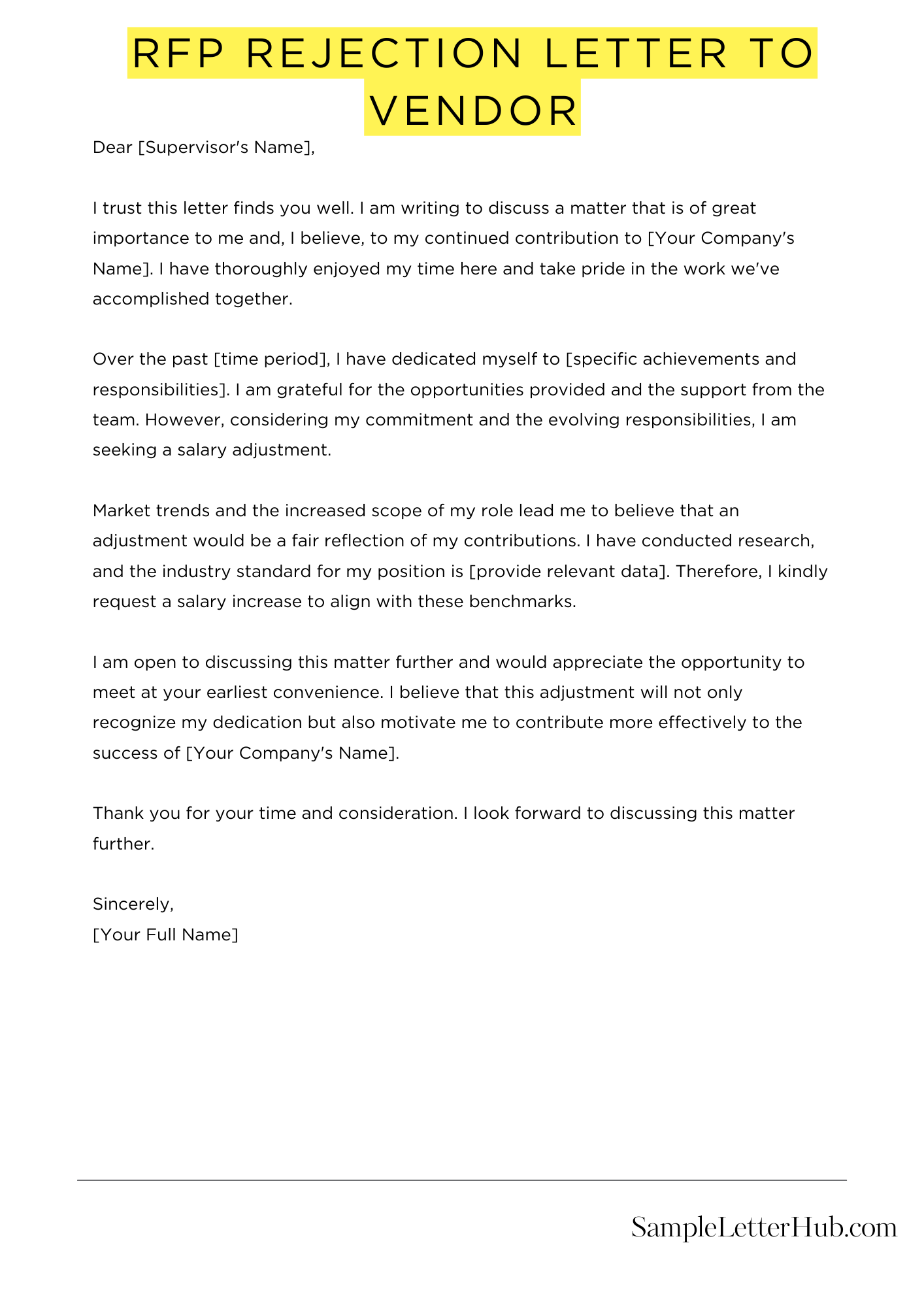An RFP rejection letter to vendor is a formal document that informs a vendor that their proposal has not been selected. It is typically sent after the evaluation process is complete and the winning vendor has been chosen. The purpose of the letter is to thank the vendor for their time and effort, and to provide feedback on their proposal.
In this blog article, we will share templates, examples, and samples of RFP rejection letters to vendors. These letters are designed to help you write a clear and concise letter that will effectively communicate your decision to the vendor. We will also provide tips on how to write a rejection letter that is professional and respectful.
By using our templates and examples, you can save time and effort when writing RFP rejection letters to vendors. Our letters are written by experienced professionals and are designed to meet the needs of businesses of all sizes.
RFP Rejection Letter to Vendor
Dear [Vendor Name],
Thank you for submitting your proposal in response to our Request for Proposal (RFP) for [Project Name]. We appreciate your interest in our project.
After careful review of all proposals received, we have decided to move forward with another vendor. Your proposal was well-written and demonstrated a strong understanding of our requirements. However, we ultimately selected a vendor whose proposal better aligned with our current needs and priorities.
We recognize the time and effort you invested in preparing your proposal, and we thank you for your participation. We wish you the best of luck in your future endeavors.
If you have any questions, please do not hesitate to contact us.
Sincerely,
[Your Name]

How to Write RFP Rejection Letter to Vendor
Introduction
Writing an RFP rejection letter to a vendor can be a daunting task. However, by following a few simple steps, you can create a letter that is both professional and informative.
Step 1: Start with a Formal Salutation
Begin your letter with a formal salutation, such as “Dear [Vendor Name]”.
Step 2: State the Purpose of the Letter
In the first paragraph, state the purpose of the letter. For example, you could write, “I am writing to inform you that your proposal for [Project Name] has been rejected.”
Step 3: Provide a Brief Explanation
In the second paragraph, provide a brief explanation for the rejection. For example, you could write, “Your proposal did not meet our requirements in the following areas: [List of areas where the proposal was deficient].”
Step 4: Thank the Vendor
In the third paragraph, thank the vendor for their time and effort. For example, you could write, “We appreciate your interest in our project and wish you the best in your future endeavors.”
Step 5: Close with a Formal Closing
Close your letter with a formal closing, such as “Sincerely,” or “Thank you for your understanding.”
Step 6: Proofread Carefully
Before sending your letter, proofread it carefully for any errors in grammar, spelling, or punctuation.
Step 7: Send the Letter
Once you are satisfied with your letter, send it to the vendor via email or regular mail.
FAQs about Rfp Rejection Letter To Vendor
What is an RFP rejection letter?
An RFP rejection letter is a formal communication sent to a vendor to inform them that their proposal has not been selected for further consideration.
What are the most common reasons for rejecting an RFP?
The most common reasons for rejecting an RFP include:
- The proposal did not meet the requirements of the RFP.
- The vendor’s pricing was not competitive.
- The vendor did not have the necessary experience or qualifications.
- The vendor’s proposal was not a good fit for the organization’s needs.
What are the key elements of an RFP rejection letter?
The key elements of an RFP rejection letter include:
- A clear statement that the vendor’s proposal has been rejected.
- The reason(s) for the rejection.
- An expression of appreciation for the vendor’s time and effort.
How should I respond to an RFP rejection letter?
When you receive an RFP rejection letter, it is important to respond professionally. You should thank the organization for considering your proposal and express your understanding of their decision. You may also want to ask for feedback on your proposal so that you can improve your chances of success in the future.
What are some tips for writing an RFP rejection letter?
Here are some tips for writing an RFP rejection letter:
- Be clear and concise.
- Be professional and respectful.
- Be specific about the reason(s) for the rejection.
- Offer feedback if possible.
- Proofread your letter carefully before sending it.

